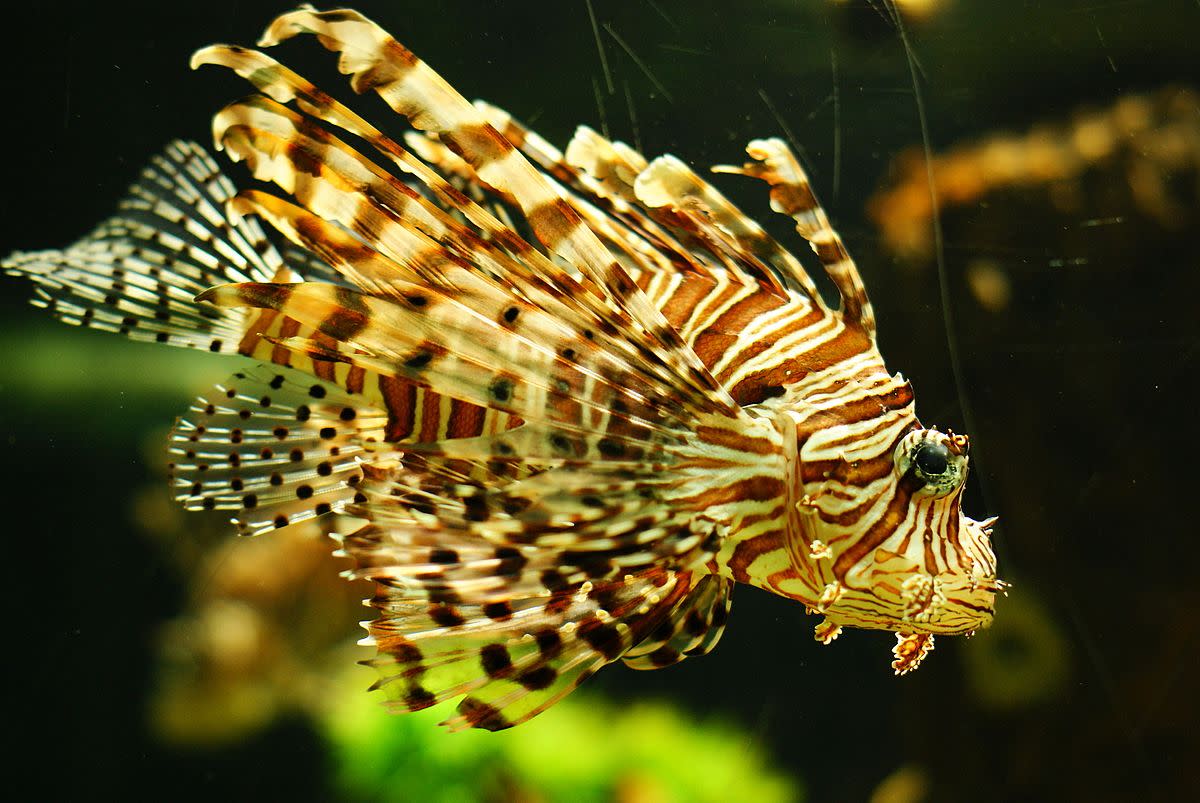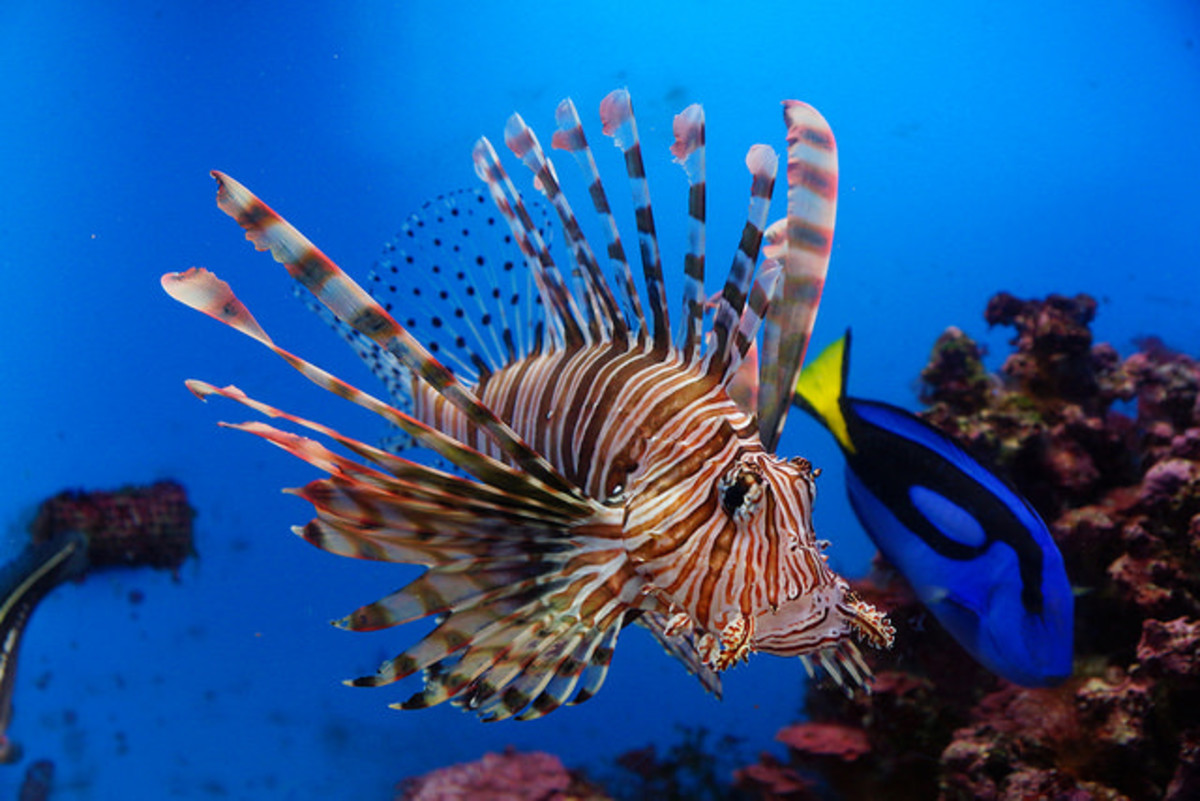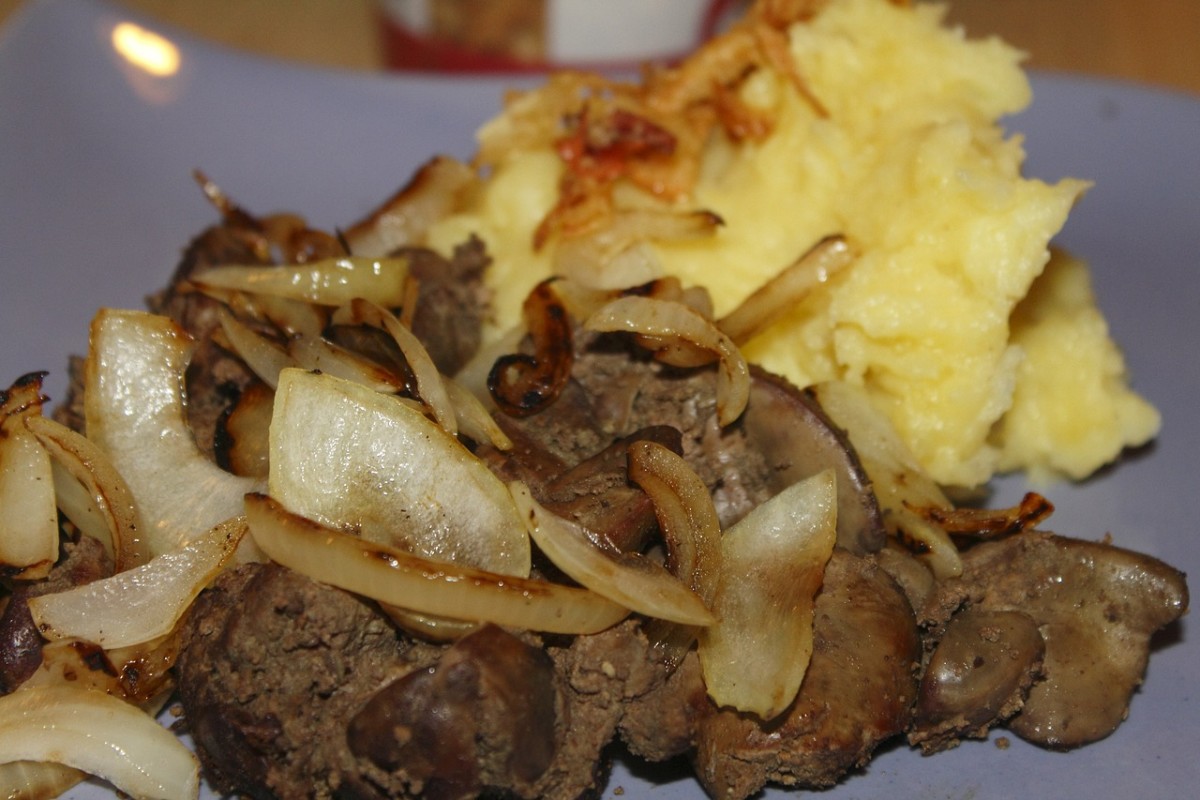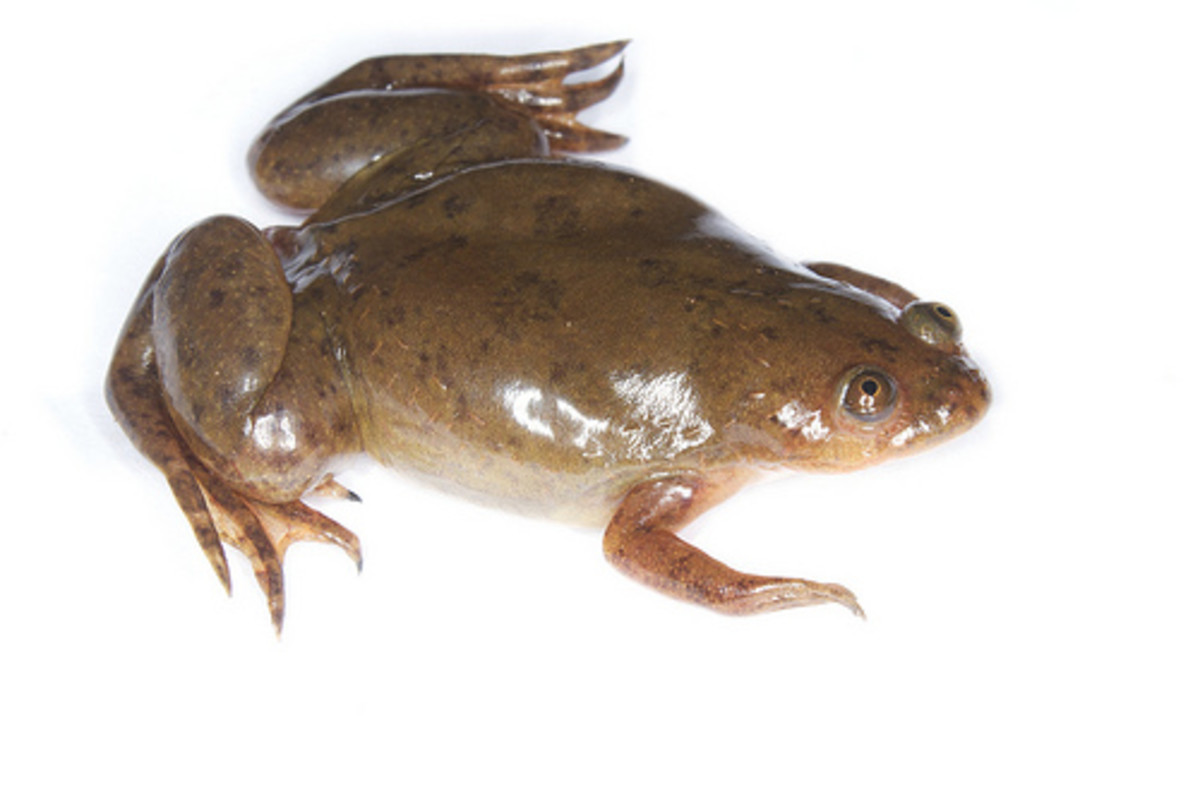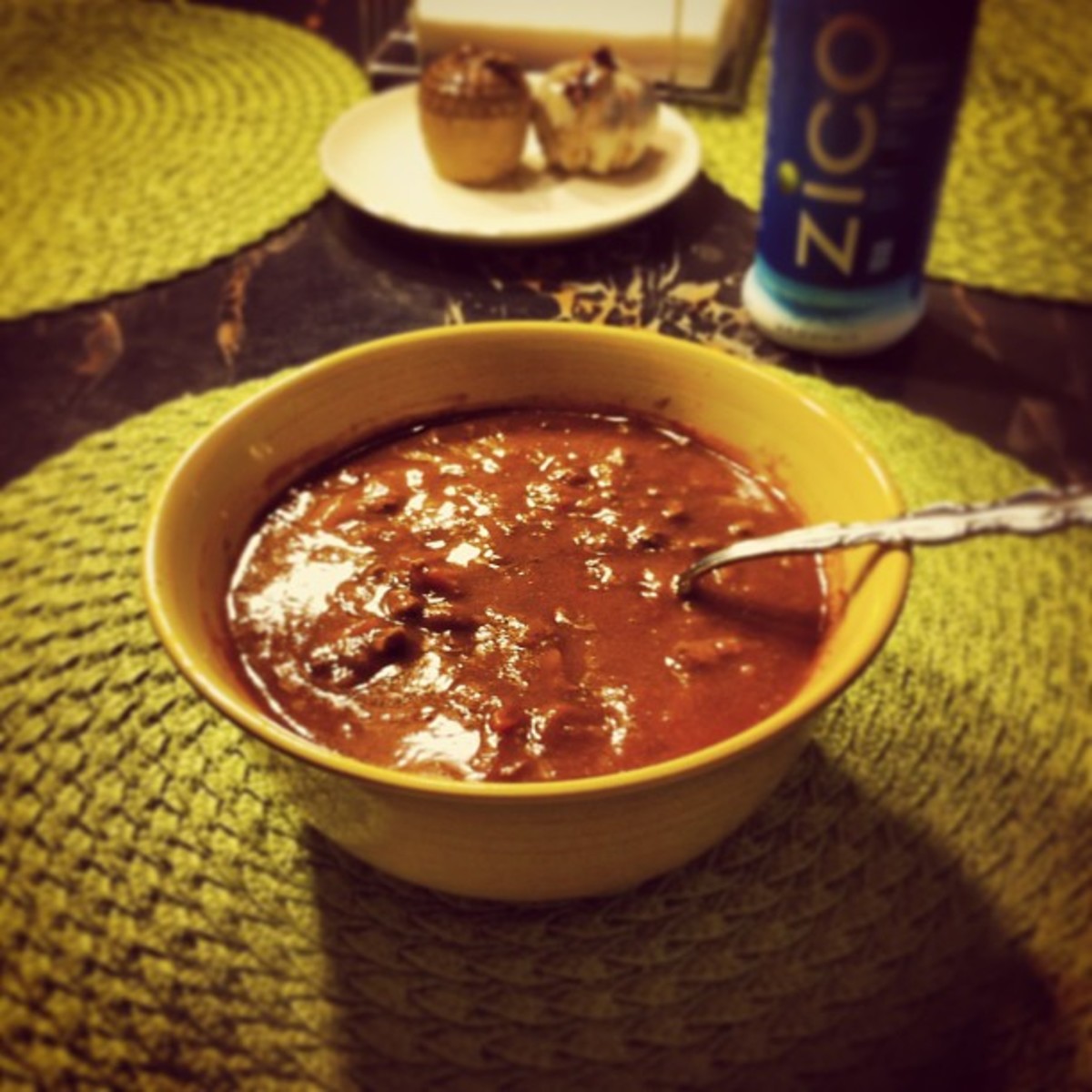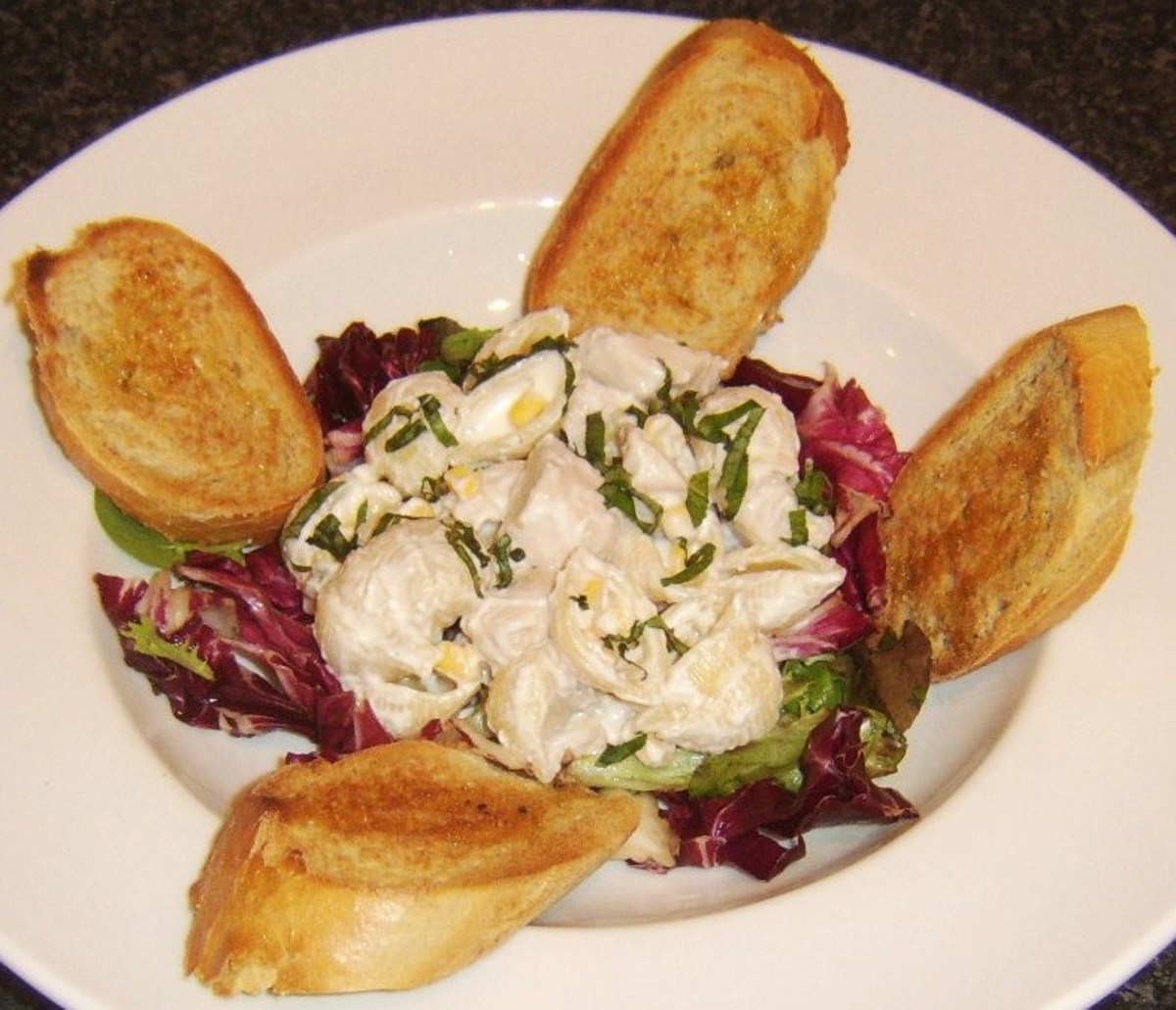Florida's Invasive Species on the Dinner Plate
Florida has one of the world's worst invasive species problems. It's not just mammal, fish and reptile, but many plants varieties as well. Invasive species are more than just a nuisance and can cause wide spread environmental and economical damage. Florida has a unique and fragile ecosystem. When non-native plants and animals are introduced it can, and usually does, wreak havoc. Normally, non-native creatures will have few native adversaries. They will begin to thrive in the new environment just as the natives start to suffer.
There is a growing number of "invasivores" that promote the idea of eating, selling and serving some of the many delicious alien invaders that are now found on the peninsula. Although the term "invasive species" may not sound very appealing to the palette, with the right recipe you can make a delicious and exotic dish and help better the environment at the same time.
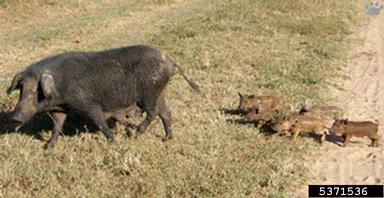
Wild Boar
Wild boar and feral hogs were first introduced to the state in the 14th century by Spanish settlers and again in the 19th century from Europe as a game animal. They breed rapidly and fear little. As we move further into the Florida prairies, the largest of the hogs are beginning to explore residential neighborhoods, putting pets and small children at serious risk. They will eat most small farm animals and destroy fields of crops. Most importantly, they are gouging up the golf courses of the areas most wealthy residents.
Many outfitters offer guided boar hunts with two types of hunts usually available. In a "fair chase" hunt you are taken out into an area known to be populated by boar. A "canned hunt" is the act of releasing a trapped boar into a fenced area to be shot. Be careful in choosing a legitimate outfitter. Some have been known to advertise fair chase when they are actually staging an elaborate canned hunt behind the scenes. Wild boar are very aggressive with razor sharp tusks. I've had many a staring contests with hogs while hiking close to civilization. The only comfort was that it has always been from a fair distance. Do not hunt wild boar without the proper equipment, knowledge and company.
Be aware that if you are eating or handling uninspected boar meat that it may carry the brucella bacteria. Although rare (about 100-200 case a year country wide), brucellosis is a disease most often contracted through unpasteurized milk and soft cheese of goats and cows but is also present in dogs and pigs. Wild boar is also a carrier of pseudo-rabies which is harmless to humans but highly fatal to dogs. When handling raw hog meat wear protective goggles and gloves and sterilize everything the meat comes in contact with. Always cook the meat thoroughly.
Many cuts and styles of USDA inspected wild boar meat are readily available through mail order exotic meat websites. Overnight marination is recommended for boar meat as is cooking at lower temperatures for longer periods of time. Overcooking will cause the meat to become very tough. Boar is a great beef substitute for your favorite chili recipe. Being wild game, boar sausage is much leaner than factory or farm raised pork sausage.
I've only eaten boar once. Ironically, it was in Pennsylvania. It was after a 24 hour train ride in which I had survived on nothing but frozen pizza, a Sprite bottle full of gin and a couple of plastic cup fulls of complimentary Amtrak ice. At Bridgewater's Pub at the 30th Street station in Philadelphia , while waiting for a connecting train, I had wild boar sliders with a remoulade sauce with fresh cut fries and a festbier. It was one of the most delicious meals I've ever had. The ground boar was somewhat sausage like in taste but very lean like buffalo or bison.
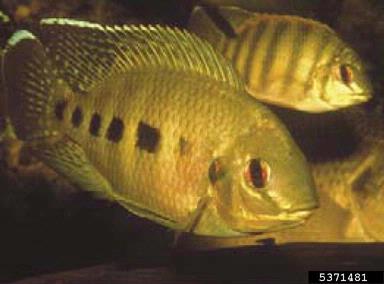
Tilapia
Tilapia is one of the most popular and heavily farmed fish in the world for their size, growth rate, mild taste and reasonable price. Because of their growth rate and vegetarian diet farmed tilapia have very low mercury levels. Be advised that feral tilapia has higher traces of mercury than those fed a more stable diet. With that stable diet comes the compromise of lower levels of the good omega-3 fatty acids and higher levels of the not so good omega-6 fatty acids for a total ratio that is much higher than that of the wild caught tilapia.
Tilapia was first introduced into Florida waterways in the early '60's for use in aquatic plant life and bug control. Because of their fast rate of growth and the ability to eat plant life that native fish don't, tilapia soon choked out many other forms of aquatic life. The most prevalent species found in Florida waters are mozambique tilapia, blue tilapia, spotted tilapia and nile tilapia. I've caught all four in the same body of water.
There are no bag or size limits when fishing for tilapia and you can fish by pole, bow or cast net. The only restrictions are that you can not release the fish and it is illegal to transport live tilapia. They must be put on ice immediately.
Wild caught tilapia can be a bit muddy or grassy in taste. You can easily remedy this with a short citrus marinade. I've enjoyed wild tilapia the most when prepared pan crusted with wild rice and a green vegetable.
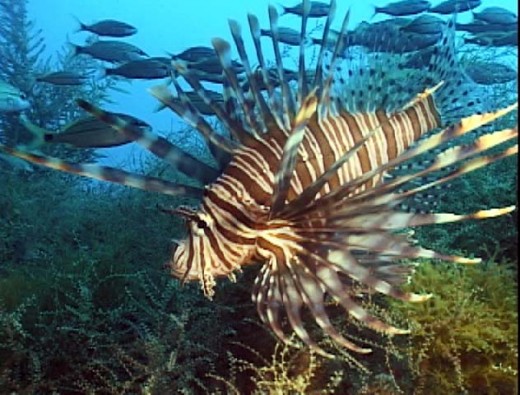
Lionfish
Lionfish were most likely introduced into Florida waters in the mid-90's by amateur home aquarium owners and escapees from commercial fisheries. The species was soon found thriving from the Keys to North Carolina, with sightings as far north as New York.
Lionfish are a fast growing, fast breeding, reef dwelling fish that feed greedily on small and large fish alike. They have no native predators. Although no fatalities have been reported, lionfish spines are venomous and the sting is very painful.
Cleaning and fileting the fish can be tricky but there is no danger in eating the flesh. In fact, the Fish House Encore restaurant in Key Largo serves a whole fried lionfish appetizer with spines intact. Cooking removes all traces of venom from the spines.
Popular lionfish dishes range from grilled or fried, nachos and chowder to ceviche and sushi. As of now it seems to be a local delicacy or a trendy dish in high scale restaurants because of availability. A lot of commercial fishermen are not yet targeting them but as demand and supplies increase the price will come down and availability will widen.

Burmese Python
The Burmese python was introduced to the Everglades through the release of unwanted pets and a great escape from hatcheries and reptile dealers in Homestead, Florida during hurricane Andrew in 1992.
Most rational Americans will draw the line at some point about what they will and will not put into their bellies. I am not one of these people. Although I haven't tried it yet, python meat is considered a delicacy in some countries going for as much as $50 a pound on some mail order exotic meat websites. It is said to have a light aroma and taste of buttery popcorn. It is mostly an export of California and Vietnam, and for now, will have to stay that way. Although it is open hunting season on the invasive Burmese python in the Everglades, it is recommended that the meat not be eaten because of extraordinarily high levels of mercury (up to five times higher than those found in Everglade gators). The most practical use from python hunting in the Everglades thus far has been the clothing and accessory industry.
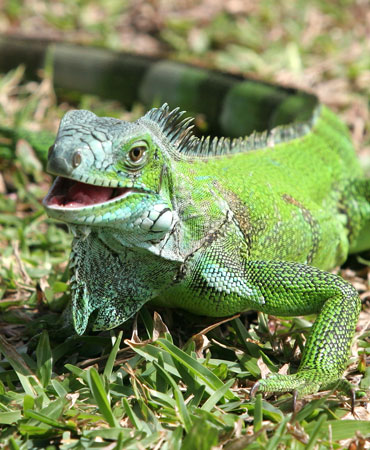
Iguana
Yet another unwanted pet released into the Florida wild when the owner tires of it, the iguana is native to Central America and the Caribbean. Traditionally, iguana was consumed throughout those areas but are now classified as a threatened species due to export and human expansion. To the contrary, in Florida, they are becoming a nuisance from Tampa to the Keys, eating everything in their path and spreading invasive plants through their feces.
It is said that the taste of iguana meat is similar to a mix of crab and chicken and is traditionally served in stews and tacos and other traditional South American dishes. Iguana meat can be found through most mail order exotic meat websites.
Bon appetit ~ If you dare.
Related Articles:
- Kale For Victory!
Fight the evil processed food empire with Kale and this delicious Udon Miso Soup recipe. - Preparing for Emergency, Natural Disaster and other forms of Impending Doom
Be prepared for anything without looking like you're in a cult or hate group.



